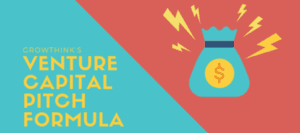Capital, funding, financing, or money (they all mean the same thing) is the fuel that allows large and small businesses to grow. Without capital, businesses fail. With capital, startup businesses and early-stage companies can begin to grow, and mature companies can achieve even greater scale.
For early-stage companies, particularly those with little or no track record of success, the challenge is to find the startup funding they need.
Because the majority of new businesses fail, banks, venture capital firms, and other lenders and investors are often highly skeptical and not willing to part with their dollars unless significant conditions are met.
However, there are ways to attract this kind of capital, and there are tons of startup capital sources that are largely overlooked by entrepreneurs.
This guide will show you the 41 sources of startup and growth funding that are available to your startup and how to access them. It is based on Growthink’s 20+ year history of raising startup and growth capital for thousands of companies.
Here’s how this guide is organized:
The guide starts by introducing you to the 3 core types of startup funding, which are 1) debt capital, 2) equity capital and 3) creative/alternative financing.
Then it walks you through the 41 best sources of startup business funding which are organized into 10 funding categories.
Here are the 10 startup funding categories:
Here are the 41 startup business funding sources:
The 3 Core Types of Startup Funding
For the entrepreneur or business owner seeking to fund their company, there are three main pools of startup capital from which to draw:
- Debt capital
- Equity capital
- Creative/alternative financing
Equity capital is the term used to describe the capital that is given to a company in return for a portion of that company’s stock or equity.
Conversely, debt capital is the term used to describe the capital that is given to a company in return for the company’s promise to repay the capital over time with a fixed or variable interest rate.
Debt capital is nearly always secured with collateral; for instance, if the business owner does not repay their loan, they could possibly lose their house or business equipment if they used it for collateral.
Creative (or alternative) finance is the term used to describe non-traditional sources of capital, including capital that must be paid back, capital that requires equity to be relinquished, and/or capital that is given to a company without any strings attached.
The key differences between debt capital, equity capital, and creative/alternative startup financing are as follows:
| Type of Capital | Term for person or institution who provides capital | Capital provider gets equity/shares of company | Company accepting capital must repay loan | Company accepting capital must often put up collateral |
| Debt | Lender | No | Yes | Yes |
| Equity | Investor | Yes | No | No |
| Creative / Alternative Financing | Depends | Sometimes (but rarely) | Sometimes (but rarely) | Sometimes (but rarely) |
Creative/alternative financing is generally the best form of capital with regards to the fact that oftentimes no equity is issued and the financing does not have to be repaid.
With regards to debt and equity capital, at first glance, it seems that equity capital is less risky to business owners. While that is true (since there is no repayment and no collateral), equity capital is typically only provided to companies meeting specific criteria (which will be discussed later).
Also, with equity capital, the business owner forgoes a significant portion of the value created if/when the company reaches a liquidity event (e.g., has an initial public offering (IPO) or is sold to another business).
However, it is our experience that a small piece of a big company is better than a large piece of a small company and that if equity capital is available to your company at reasonable terms, it is often a good decision to accept it.
Finally, in our overview of startup capital, it is important to mention a hybrid of debt and equity known as a convertible note. Convertible notes are loans that are made to a company at a fixed rate of interest that can either be redeemed for cash (like traditional debt capital) OR can be converted into stock (equity) at a predetermined date or within a certain period.
Convertible notes are a preferred financing instrument for friends and family and some angel investments since they allow investment opportunities without the difficult process of determining the price of each of the company’s shares.
The 41 Best Sources of Startup Business Funding and How to Access Them
There are 10 categories of startup business funding as follows:
These categories are listed in order of difficulty in assessing. For example, raising funding via business credit cards (in the “quick loaners” category) is significantly easier than raising venture capital (in the “institutional equity” category).
That’s why when raising capital, you should generally start with the first categories, and then work your way up to the harder ones. Note that funding is generally raised in rounds (also referred to as “funding rounds” or “startup funding rounds,” with a certain amount of money being raised in each round. You don’t raise all the money you’ll ever need for your business on Day 1 or in your first round. Rather you raise some money and use it to achieve your initial milestones. Then you raise more money and achieve more milestones. And so on.
Below are the 10 startup funding categories and 41 sources of business funding within them.
A. Quick Loaners
“Quick loaners” include credit cards and charge cards. They are at the bottom of the pyramid since they are the easiest form of funding to raise. In fact, I have seen entrepreneurs access over $100,000 in business credit card funding within months.
Note that an entrepreneur or business owner’s personal credit rating is the best judge of whether he or she has a track record of paying back loans. As such, when applying for credit or charge cards (which are essentially loans), expect a thorough examination of your credit history. If your credit history is weak, start repairing it before you seek any type of debt capital.
1. Credit Cards
Credit cards are the easiest way to get capital for your company. While the process of gaining credit can be relatively simple, it’s important to be careful with credit cards as interest rates are generally very high.
There are many examples of successful companies which have been funded by credit cards. For example, Google founders Page and Brin maxed out their credit cards for computers and office equipment, building Google’s first data center in Larry’s dorm.
Likewise, Under Armour founder, Kevin Plank, accumulated over $40,000 in business credit card debt spread across five cards to fund his company.
Unless your business is one in which cash comes in soon after an expense (e.g., a consulting firm that pays its consultants for a month before getting paid by the client in month two), then you need to be careful with credit card financing.
Likewise, credit cards are often good to fund short-term cash crises; for example, if you can’t fund payroll since you are waiting for a customer check to arrive and/or clear.
2. Charge Cards
Charge cards are similar to credit cards, except that the full balance must be paid in its entirety at the end of every 30-day cycle. Charge cards are a common source of small business funding and are great to purchase furniture, equipment, and other items.
Charge cards often do not have a spending limit, and thus allow the entrepreneur or business owner great flexibility. However, they should be used with the same careful discretion as credit cards.
Note that stores and manufacturers from which you can purchase business supplies and equipment, like Office Depot and Dell, offer both revolving credit cards and full-balance-due charge cards which can be used to help finance your business.
Likewise, other vendors often offer financing options that can be structured like credit cards or charge cards. This topic, vendor financing, is discussed more later.
B. Crowdfunding
3. Crowdfunding
Crowdfunding is both a funding category and a type of startup financing.
Perhaps the best creative/alternative form of money for your new business is equity crowdfunding. Crowdfunding is a breakthrough way for entrepreneurs and nonprofits to raise capital for their projects, small businesses, or organizations by gaining the support of a “crowd” or a large group of people, to give them money.
Crowdfunding is grassroots funding where dozens, hundreds, or thousands of people donate $10, $20, $50, $100, or $200 (or more) at a time to your new business venture.
Crowdfunding, when done the way we recommend (because it is most effectively raised this way), is reward-based donations. That is, you give donors rewards for contributing. These rewards may range from a simple thank you, to giving $50 donors a defined number of your products in the future, to naming a product after a $1,000 donor.
How much funding can you raise? Companies have raised small amounts, such as $2,000 to $10,000. While others have raised millions of dollars with this method.
Crowdfunding typically requires 90 days to raise. There is some work involved in setting up your crowdfunding account and creating your video and other crowdfunding materials.
C. Creative Funding
Below are numerous “creative” sources of funding that have been used to fund thousands of ventures.
Some of these funding sources could apply to you; others will not. Go through and figure out which sources you can tap.
4. Competitions and Awards
Competitions and awards are also great sources of free capital from which great companies have been born.
For instance, Mike Cassidy, CEO of Stylus Innovation, won $125,000 at MIT’s business plan competition and went on to sell the company to Artisoft for $13 million.
Another example of competition and award financing is the $50,000 prize won by personal finance application Mint after being selected as the best-presenting company at a TechCrunch event.
Seek out and apply to business plan competitions and other competitions and awards.
5. Donations
Believe it or not, donations have been used to fund many companies including for-profit ventures.
The most notable of donation-funded ventures is perhaps Wikipedia which has raised several million dollars in donations to date.
In the for-profit space, an example of donation-funded is Peter Cooper, founder of FeedDigest. In 2004, Cooper added a PayPal button to his website and asked users of his website to donate money.
His visitors subsequently donated enough money to allow him to grow. Soon after, an angel investor wrote him a check for $100,000.
These donations differ from Crowdfunding, discussed above, which is generally rewards-based donations (you are giving rewards to people who donate).
6. Partner Buy-In
Finding a business partner is often a great way to finance your new business, particularly if the partner has his own or access to capital.
One concern that entrepreneurs have (rightfully) is that if they partner with someone and that person puts in the initial funding, that partner will own more of the company than they do. This is typically the case.
To overcome this, you can earn “sweat equity” in your business before taking on the partner. “Sweat equity” is a term used to describe the contribution made to a project by people who contribute their time and effort, and not their money.
You can earn “sweat equity” by completing a lot of the non-capital-intensive work such as coming up with a new business idea, researching the market, and developing a simple business plan template.
At this point, your business has a lot more value (than if it were still solely an idea) and then you can seek a partner. The partner then buys into the business. That is, they write a check to the business to get a meaningful equity stake and partner position.
7. Consulting
Several companies who are developing products for long-term growth generate short-term revenues to fund their companies by offering to consult.
This consulting not only brings in revenue but oftentimes also creates relationships with customers that will purchase their products in the future.
An added benefit of this type of startup funding is that the consulting often reveals information on customer needs which leads to better product and service development.
8. Pre-Sales
Pre-sales or advanced sales is another Creative/Alternative financing technique. It technically falls into the genre of customer financing since, in this technique, prospective customers provide the money to fund your business.
With pre-sales, potential customers pay you before you deliver your products to them. In some cases, potential customers may pay you before you even develop your product.
Such was the case with Scott Mitchell, President, and CEO of Learning Productions, a corporate training and “eLearning” company. Mitchell presented his learning software idea to a Fortune 500 company called Avnet, knowing that Avnet needed a product like the one he was set on developing.
Avnet liked his presentation enough so that they gave him a big sales order (for when the product was developed) and more than a million dollars in financial support to build his business.
9. Seller Financing
One way to start a business is to buy an existing business. Existing businesses often have many benefits such as an established customer base and existing employees.
If you want to buy a business, a great source of financing is seller financing. Depending upon the business, the seller may be willing to finance the majority of the purchase price. In this case, you will make periodic payments to the previous owner much like you pay off a personal loan.
10. Buying a Business Out of Bankruptcy
Buying a business out of bankruptcy is another way to own a business for little out-of-pocket cash.
This is particularly true if the business you buy has a lot of assets that you don’t need. You can then purchase the business and sell off the assets to fund the purchase.
Note that buying a business out of bankruptcy is relatively complex, so you need to understand all the steps of this process.
11. Selling Assets
An asset sale is another way to finance your business.
In an asset sale, you sell unneeded assets to the highest bidder. These assets could be both business and personal assets.
Oftentimes entrepreneurs sell these assets via eBay and other online auction sites and classified ads, or a physical “garage sale.”
12. Leasing Equipment
Many businesses require expensive equipment, and most businesses require office equipment such as computers and copy machines (and desks and cubicles too).
Rather than laying out cash for this equipment, you should consider leasing. Leasing reduces your need for cash to start/grow your business and allows you to use the cash you have for other items.
13. Using A Second Job
Second jobs are great ways to finance your own business.
Sure, it’s not ideal to have to divert your focus and energy from your business into something else, but an entrepreneur must be willing to do whatever is needed to finance their business.
As an entrepreneur, you need to have the 24/7 mentality, and a second job often requires significant work hours towards achieving success.
According to a survey by the American Express Open Small Business Monitor, 18% of small business owners surveyed said they are working a second job to help finance their business.
So, you won’t be alone if you finance your business with a second job.
14. Buying Real Estate
If you are starting a brick and mortar business, perhaps a restaurant or dry cleaning business, it might be easier to get financing to purchase the building in which you want to locate business versus financing and raising capital to start/grow the business.
Real estate has a lower risk profile than a business startup. This oftentimes makes it easier to finance your business this way.
15. Landlord Financing
Over time, you will pay a lot of money to your business’ landlord. And, oftentimes you will have to pay a lot of money to contractors to build out your office or storefront to your specifications.
As much as possible, you should ask your landlord to finance these expenses. To begin, the landlord should finance as much of the build-out as possible. In addition, you can often negotiate up to 6 to 12 months of free rent on a 5- to 7-year lease.
Finally, it is sometimes a good idea to make your landlord an equity holder in your business (and ideally they pay for this equity). If a situation arises when you are unable to pay rent, the equity-holding landlord will generally be much more lenient.
16. Subletting Your Space
Typically you will get a better lease rate, on a per-square-foot basis, if you lease a larger amount of office or storefront space.
And, if you eventually expect to grow the company and use the full space, it might be a good idea to get the larger space now, rather than getting a smaller space and having to go through the hassle of moving later.
One good idea is to get the larger space and rent out a portion of it (i.e., sub-lease it) to a tenant that pays a higher per-square-foot cost.
17. Buying Equipment & Supplies with Equity
If you have limited funds, the worst-case scenario is to have to pay cash for equipment and supplies. The next best alternative is to lease equipment as specified earlier.
The best alternative is often to purchase equipment and supplies with the equity of your company.
That is, to get your suppliers to forego cash revenues from the sale of these items to you in return for equity in your business.
While giving up too much equity in your business will limit your upside (since when you eventually exit the business you will not get as much of the proceeds) typically, the more people that are committed to the success of your business the better. So, getting more equity holders is generally a good thing.
18. Sponsors/Advertisers
Most businesses lend themselves to potential sponsors or advertisers to bring in revenues to help fund and grow the business.
For example, many Internet businesses have sponsors that visitors can click on and go to their sites. Likewise, many restaurants have placemats with local advertisers on them.
The key is to figure out what other products, services, or businesses your customers use or need that don’t directly compete with your own business, and then solicit them as sponsors or advertisers.
19. Bartering
Your business will inevitably produce a product or service and/or offer real value to your customers. And, even if your product or service is not yet developed, you have the know-how that is valuable to someone else.
When you seek services or products to help grow your business, don’t be afraid to try to barter. That is, you give away your products, services, and/or know-how for someone else’s products, services, and/or know-how that you need.
D. Social Lending
20. Social Lending
Social Lending is both a funding category and a type of startup funding.
Social or Peer-to-peer (P2P) lending is when one individual lends money to another individual without an intermediary such as a bank.
Prosper Loans Marketplace (www.prosper.com) and LendingClub.com are examples of the peer-to-peer lending marketplace. In these networks, private lenders will bid on your interest rate, plus the right to give you a business loan.
Social lending is debt that has to be repaid, but because there are tens of thousands of potential individual lenders, you can often raise it easier and at a more competitive rate than bank loans.
Also, lenders that you meet through social lending can be encouraged to become angel investors in your company.
E. Financial Maneuvering
Financial Maneuvering is a category of financing that involves financing techniques to provide funding to your venture.
These techniques are discussed below. Funding through some of these techniques can be accomplished extremely quickly and easily, but only if you qualify.
21. Factoring
Factoring is the sale of accounts receivable invoices to a third party. The third party pays the company right away and then assumes the obligation of collecting the invoice.
For instance, if your company sold a product to another company for $50K and you are still waiting to receive the $50K check, a factor might buy that receivable from you. The factor might pay you $45K now, earning $5K for taking the risk that the buyer won’t pay and for having to wait to be paid.
The good news for companies is that factors can often quickly get funds for your business. However, they are often a very expensive way to finance accounts receivables.
Factoring companies determine their fees based on factors such as the total amount of the invoice and the length of time until the invoice is due.
For a small invoice such as $1,000 which is due in 30 days, a factor will charge on average 5%. So, you would receive $950 and the factor would receive $50. While factoring fees go down based on increasing the size of the invoice, note that in this example, the annual interest rate of factoring is 60% making it very expensive.
22. Money in Your 401K, IRA, or Life Insurance Policy
There are many instances where you can invest the money that you have earned in your 401K account, individual retirement account (IRA), or life insurance policy into your business.
You should consult your accountant, tax advisor, and/or lawyer, before doing this to avoid any financial penalties and to determine the best way to set this up (e.g., establishing a corporation and investing from your own savings funds into the corporation).
23. Reverse Mergers
Reverse mergers, also known as reverse takeovers or reverse IPOs, occur when a private company buys a public company and then merges with it.
Typically, the public company is a non-operating or “shell” corporation that is listed on a small stock exchange such as the Toronto Stock Exchange, or on the Over the Counter Bulletin Board securities market (OTCBB).
The publicly traded corporation is called a “shell” company because the only thing that exists of the original company is its organizational structure. Shareholders of the previously private company receive a majority of the shares of the public company and control of its board of directors.
Reverse mergers can be accomplished quickly (often within weeks) and at a small fraction of the cost of an initial public offering (IPO).
Once the private company is public, it can gain the benefits of a public security such as:
- Increased liquidity of shares of the company
- Higher share price and, as a result, higher overall company valuation
- More access to the capital through future stock offerings and the ability for new shareholders to invest quickly and easily online
- The ability to use company stock to purchase other companies
- The ability to use company stock to attract and/or retain employees
The key fees associated with a reverse merger are legal fees and the cost of purchasing the public shell company. Typically, these fees will total $100,000 to $125,000.
24. Direct Public Offering (DPO)
A direct public offering (DPO) is when a company raises capital by selling its shares directly to its own customers, employees, suppliers, distributors, and other individuals.
DPOs are much less expensive than traditional underwritten offerings (e.g., IPO). In addition, they have fewer restrictions.
Companies conducting a DPO must still be in full compliance with local securities laws, including completing the following documents:
- A prospectus to its prospective and existing shareholders
- Financial reports available for public consumption
- Accurate and updated stock information available for public consumption
- Audited financial statements
25. Investment Clubs
An investment club is a group of individuals who meet regularly to invest money.
Typically investment clubs invest in public stocks. However, occasionally, these clubs will provide funding to a privately held company.
To find local investment clubs:
- Check out the classified sections in local print/online newspapers
- Do this search online: “[name of your town/city] investments club”
- Ask local bank lenders if they know about local investment clubs
26. Employee Stock Ownership Plans (ESOPs)
An employee stock ownership plan (ESOP) is when the company offers shares of the company’s stock to employees.
ESOPs are a great tool for motivating your employees. That is, if all employees have equity in the company, they will all be highly motivated to have the company succeed (so their equity is worth a lot). In fact, most venture capitalists insist that the companies that they fund have ESOPs.
ESOPs also help you finance your company since you can oftentimes pay your employees LESS than market rates in cash, by compensating them partially with equity.
In fact, these are often the best employees; the ones that believe in your company so much that they prefer long-term equity versus short-term cash.
F. Bank Lines & Loans
Bank lines and loans are a great source of business capital that can be acquired fairly quickly. They are forms of debt, so they will have to be paid back with interest.
As mentioned earlier, an entrepreneur or business owner’s personal credit rating is the best judge of whether he or she has a track record of paying back loans. As such, when applying for any of the below debt capital sources, expect a thorough examination of your credit history. If your credit history is weak, start repairing it before you seek debt capital.
To help get started, you can download our sample business plan for a bank loan PDF.
27. Home Equity Loans
A Home Equity Loan is a loan that is secured by the home in which the owner lives.
Home equity loans can often provide a substantial amount of capital to the business.
Unlike credit cards, the interest rates for home equity loans are much more reasonable. In fact, average home equity loan rates are currently only half of average credit card rates.
In addition, home equity loans are often tax-deductible.
However, because they are secured, these loans place substantial risk on the owner. Specifically, the business owner’s house becomes collateral for the loan, and if the owner defaults on the loan, their house becomes the property of the bank.
Similar to credit card financing, Home Equity Loans make sense if the business owner expects a return on their dollars in a short period, perhaps within 180 to 365 days.
28. Lines of Credit
A business line of credit is an amount of cash that a bank or other financial institution makes available to you.
For instance, if your company is accepted for a $100K line of credit, you have access to the full $100K of capital, but you only pay the interest on the precise amount that you actually borrow.
So for example, if you have a $100K line of credit but are only using half of it, you only pay interest on $50K and not the full $100K. It’s similar to a credit limit on your credit card. You have access to funding up to your limit, in this case, $100K, but only charged interest on the actual amount of funding that you use.
An additional benefit of lines of capital is that you are generally allowed to use them for anything your business desires, such as for working capital, advertising, etc., while many other types of loans have specific parameters such as requiring you to use the funding for capital expenditures such as purchasing equipment.
Banks are the most commonplace to get lines of credit. In determining which companies to offer lines of credit, banks often examine your business’ financial records and tax returns for the last 2 or 3 years.
Lines of credit can be made with and without collateral and are known accordingly as secured and unsecured lines of credit. Secured lines of credit can have interest rates as low as the prime rate. Unsecured lines of credit typically have interest rates ranging from prime plus 1.5% to prime plus 10% depending on the credit history of the borrower.
29. Bank Loans
Bank loans are similar to lines of credit, except that you pay interest and are given all of the capital at once.
So, with a $100K line of credit, you have access to the full $100K, but don’t have to use it, that is, you can simply not access the funds from your bank, and you don’t pay anything for the funding you don’t use.
But, with a $100K traditional business loan, the bank or other financial institution gives you $100K to deposit into your business’ bank account and you pay interest on all $100K whether you use it or it simply sits in your bank account.
These traditional bank loans are a great source of inexpensive capital, but only for specific types of businesses, mostly mature businesses.
With regards to rates, with good solid credit, business loans are made at the prime rate. With weaker credit, slight premiums are assessed.
These loans are typically only available to mature businesses because bank loans typically require extensive documentation to be approved. And often this documentation includes the past three years of your business’ operating results. Obviously, if your business is a startup or less than three years old, you thus don’t qualify.
Also, most traditional business loans must be secured with either business assets such as land, property, equipment, or inventory, or personal collateral such as the business owner’s home.
As such, newer businesses should seek SBA loans, which are detailed in the next section.
If you are seeking a Bank Loan, subsequent sections of this report will walk you through the process and allow you to quickly and easily raise loans for your business.
30. SBA Loans
A U.S. Small Business Administration (SBA) Loan is a loan made to a company by a local bank or other SBA partner institution. Banks like making SBA loans since the U.S. Small Business Administration guarantees a large portion of the loan, making their investment less risky (i.e., if the business fails to repay the loan, the SBA pays the lending bank up to 90% of the loan amount).
The SBA still requires banks to adhere to traditional commercial loan underwriting principles including collateralizing the loans and requiring personal guarantees from the business owners who receive the loans.
But, the SBA’s guarantee enables banks to loan more money, offer longer terms, and approve more small business loans for earlier stage businesses than they otherwise would.
Sizes and Use of Loans: The maximum SBA Guarantee to the bank or partner institution is limited to $750,000. However, SBA loan sizes can vary a lot, from as little as $5,000 to as much as $2 million.
Small business loans can be used by your business only to do one of the following:
- To purchase land or buildings, to cover new construction as well as expansion or conversion of existing facilities;
- To acquire equipment, machinery, furniture, fixtures, supplies, or materials;
- For long-term working capital including the payment of accounts payable and/or for the purchase of inventory;
- To refinance existing business indebtedness which is not already structured with reasonable terms and conditions;
- For short-term working capital needs including seasonal financing, contract performance, construction financing, export production, and for financing against existing inventory and receivable under special conditions; or
- To purchase an existing business.
SBA loans vary dramatically based on the type of SBA loan program offered such as 7a loans or 504 loans.
G. Strategic Financing
The following forms of funding are known as “strategic financing” since there is value to these deals beyond just the dollars raised.
Strategic financing is a great form of capital. It is widely available and can be accessed fairly quickly, but it does often require a bit of negotiation on your part.
31. Customer Financing
Customer financing can provide a promising source of funding for your company. With customer financing, current or potential customers provide capital that can then be used to develop or produce products and/or otherwise fund your growth.
There are several reasons why customers might provide funding for your business:
- They know you
- They believe in your vision
- They see the potential upside in fronting you capital now, such as:
- Preferred customer status
- Future price discounts
- Equity upside in your business (i.e., if your business is sold or goes public, they will reap great financial benefits)
- The ability to influence your business decision (possibly to create products that are good for them)
One example of customer financing is Australia’s Blowfly Beer. To fund early business operations, the company sold equity to its customers.
Not only did this provide the capital that the company needed, but it provided the company with market research, a customer base, and great word-of-mouth advertising (people are much more likely to support and promote products in which they invested).
32. Vendor Financing
Just like customer financing, vendor financing is often a great source of capital. As the name implies, vendor financing occurs when a company receives capital from one of its vendors or suppliers.
Vendor financing is actually one of the most popular forms of debt financing for companies. Vendor debt financing is often known as “trade-credit,” and is when a vendor sells you a product or service and you don’t have to pay right away, but rather the debt either needs to be paid in full within a certain period or periodic payments with interest are required.
However, sometimes vendors provide both interest-free or equity-based financing for the following reasons:
- To gain a built-in customer base. By funding your business, you will buy more, and they will sell more, (now or in the future) of their products and/or services.
- Loyalty: you will be more loyal to the vendor.
- Learning/market research: the vendor will have you as a closer customer and will learn ways from you to improve their products and services.
- Equity upside, if they make an equity investment and your company has a significant liquidity event in the future.
One famous example of vendor financing is that early on, shoemaker Kenneth Cole sought out a struggling Italian shoe manufacturer knowing that they needed clients and would probably be willing to offer to finance.
The Italian shoe manufacturer-provided funding to the then-fledgling company.
33. Franchising Your Business
When you franchise your business, you are essentially selling your business concept to others.
These others, or franchisees, pay you for the right to use your brand, your supplies, and/or your system. Franchisees typically pay you an upfront fee and ongoing fees (typically a percentage of their revenues).
As such, franchisees can provide you with funding to launch your own initiatives (e.g., more company-owned stores).
Franchising is easier once you have an established/proven business (since franchisees are more attracted to this), but franchising has been used by companies who solely had concepts and not established businesses.
34. Licensing Rights to Your Product or Service
If your product or service eventually makes it big, there is significant value to a retailer or distributor to have exclusive rights to sell it.
As such, you may be able to sell these licensing rights for advance payment which you can use to fund your business. Ideally, you limit the licensing rights to a finite period to not limit your company’s future potential.
H. Grants
35. Grants
Grants are both a funding category and a type of financing.
Grants are often a great way to fund your company’s growth and typically are essentially free cash. That is, these sources provide capital that you are not required to pay back and do not require you to give up equity. However, like everything, there is work involved in getting this type of capital.
The primary source of grants is the federal, state, and local government, but many foundations also provide grants. However, while the government offers small business grants to both for-profit and nonprofit organizations, foundations nearly exclusively fund nonprofit organizations.
The Small Business Innovation Research (SBIR) Program and Small Business Technology Transfer (STTR) Program grants combine to award $2 billion to small, for-profit high-tech businesses each year.
Like strategic investments, grants are often made to fund ventures that could enhance the organization’s cause.
For example, in 2008, the National Cancer Institute provided a $107,000 grant to Imaging Biometrics, a provider of advanced visualization and analysis software solutions, to develop a tool to improve breast cancer diagnosis.
Likewise in 1999, Maxygen, Inc. received a multi-million dollar government grant from the U.S. Government’s Defense Advanced Research Agency, known as DARPA, to develop aerosol-based vaccines to protect against a broad spectrum of pathogens. Subsequently, Maxygen has gone public.
With regards to government grants, there are 26 federal grant-making agencies such as the Department of Homeland Security, the National Endowment for the Arts, and the Department of Defense.
The best starting resource to access to find government grants is Grants.gov.
I. Individual Equity
As you should recall, equity capital only earns a return when there is a liquidity event (e.g., the company has an initial public offering (IPO) or is sold to another business).
Individual equity transactions are ones whereby an individual, be it a friend, family member or other individual investing on their own behalf (an “angel”) invests in your company.
Note that sometimes individuals make debt investments (loans) into new ventures too.
36. Friends and Family
Your friends and family are the most frequent starting point for an entrepreneur or business owner seeking initial equity funding for their company.
Your friends and family are the people that know you best, and will often put money behind the venture because they have trust in you and your vision.
Capital investments at this stage usually fall between $5,000 and $100,000, though investments near that upper ceiling are more frequently considered “Angel” investments.
Note that not all friends and family investments are equity investments. Sometimes friends and family members make personal loans as well, or the investments are done as convertible notes.
37. Angel Investors
The term “angel investor” is defined as a private investor who offers financial backing to an entrepreneurial venture in return for equity in the venture (sometimes angels also give personal loans).
These angels are typically current or former entrepreneurs, successful executives, venture capitalists, or otherwise wealthy individuals.
With regards to venture capital investors, sometimes venture capitalists see deals that are not a good fit for their venture capital funds but which they personally like, and thus may invest in personally.
Angels typically provide more capital than friends and family but less than venture capitalists. Specifically, angel financing amounts typically range from $50,000 to $500,000.
For this money, angels usually gain 10% to 35% of the equity of the company.
Many, but not all angel investors are accredited or professional investors, which are investors which either have a net worth of over $1 million or have an annual income of $200,000 or more or $300,000 or more when including their spouses.
Accreditation is important because if you do not register your capital raise with the appropriate state and federal agencies, your investors must be accredited. If all of your investors are accredited, then you do not need to register your securities offering (note that this has been changing due to changing federal regulations).
If you’d like to learn how to raise angel funding, access our Ultimate Guide to Angel Investors here.
J. Institutional Equity
Institutional equity transactions are ones whereby a professional investment organization such as a venture capital firm, corporation or private equity firm invests in your company. Because angel investment groups function in a similar way to a professional investment organization, they are included in this category.
The positive with institutional equity investors is that they can write very large checks. Venture capital firms routinely write $1 million, $5 million, $10 million, $25 million, and even $50 million checks. And private equity firms have doled out checks exceeding $1 billion. However, raising institutional equity is the most challenging form of funding to raise.
Because equity capital only earns a return when there is a liquidity event (e.g., the company has an initial public offering (IPO) or is sold to another business), the criteria for these investments differ from debt investments.
Specifically, investors will generally only invest in equity when they believe that the company has great potential to achieve a liquidity event that enables the investors to earn a significant return on their investment. The following factors imply that a company has this potential.
The first criterion is the scale or the potential for the company to achieve significant annual revenues, typically above $50 million to $100 million within a 5 to 7 year period.
The second criterion is barriers to entry. Barriers to entry are those things that make it difficult for another firm to compete against you such as patents or proprietary technology, a unique location, and long-term customer contracts.
The third criterion is having a strong management team.
The next criterion is that equity investors need to feel confident of your exit strategy, mainly that the chances are good of eventually having another firm purchase you or your firm going public.
Finally, institutional equity investors tend to want to invest in local businesses. While geography doesn’t necessarily impact exit potential, investors often like to invest in companies that are within 200 miles so that they can visit them often and participate in Board and other meetings.
Note that showing a strong management team and being local is also extremely important to raising debt capital. While the other factors, such as showing barriers to entry, are still important to debt lenders, they are even more important to equity investors.
Below is an explanation of the key types of institutional equity.
38. Angel Investor Networks
A growing trend is the organization of angels into angel groups or networks of 10 to 150 accredited investors
This pooling of resources facilitates combined research as well as pooled capital. Specifically, when angel investors invest together, they have more resources with which to research whether the deal is good or bad for them, and they can provide more capital to entrepreneurs.
While there were only around 10 of these groups in 1996, there were over 300 just 10 years later. These groups, however, account for only 10,000 of the approximately 250,000 active angel investors in the United States.
As such, if angel investors are right for you, you should seek both individual angels and angel groups. There are more individual angels from which to choose, but the groups typically do more deals and have more capital to put into each deal. Typically, an angel group will invest from $100,000 to $1,000,000 in a venture.
39. Venture Capitalists
A venture capital firm is a financial institution that focuses on providing capital, in the form of equity, to companies that offer them the prospects of significant growth.
The partners and associates at these firms are known as venture capitalists. The term “VC” or “VCs” applies to both firms and individual venture capitalists.
Unlike angel investors, VCs are professional institutions that invest other people’s money. VC firms raise money for their own venture funds from sources that primarily include pension funds, financial and insurance companies, endowments and foundations, individuals and families, and corporations.
The VCs are then charged with finding high-growth companies, making investments in them at favorable terms, guiding and nurturing them, and enacting a liquidity event.
Because they are utilizing other people’s money, and are judged and compensated by the performance of their investments, venture capitalists are extremely rigorous in their investment decision-making process.
Note that as mentioned earlier, VCs tend to invest in companies with a significant market potential of $50 million, $100 million, or more.
This is because even with all their relevant experience, the average venture capital firm will lose money on half the companies they invest in and only break even on a third.
Where they make their money is on the 17% (approximate) of companies that they invest in that see explosive growth and provide remarkable returns of 10 times to 100 times or more on their investment.
If you’d like to learn how to raise venture capital funding, access our Ultimate Guide to VC Funding here.
40. Strategic/Corporate Investors
Strategic investors are generally corporations (but they can also be individuals or local or small businesses) that invest in early-stage companies to 1) earn financial returns and 2) partially control ventures that could affect or “disrupt”, that is causing a significant change to their market(s) in the future.
Strategic investors can offer capital in amounts ranging from a few hundred thousand dollars or less to several million dollars.
Some corporations, like Intel (via Intel Capital) and Google (via Google Ventures), have formal venture capital arms that actively seek and invest in emerging companies.
These corporations are ideal to contact should you have a venture in their market space(s), since if they like your concept they could provide value well beyond their capital contributions such as strategic advice, industry connections, and distribution assistance.
Note that most corporations, even if they don’t have formal venture capital arms, do fund emerging ventures if they are properly presented to them, specifically if the venture’s management team clearly shows how their venture could impact the industry and/or help the corporation further its mission.
For example, if you have a product or technology that enables a corporation to gain a competitive advantage and thus increase business profits, they might be extremely receptive to providing funding.
41. Private Equity Firms
As the name implies, private equity (PE) is the process of investing in private companies (those that are not listed on a public exchange) in return for shares of those companies.
There are several subsets of private equity including:
- Venture capital (which we have just discussed), which focuses on investing in privately-held, young, fast-growing companies
- Buyout investing
- Recapitalizations
- Mezzanine investing
While venture capital is technically a subset of private equity, it is generally treated separately and the term “private equity” is generally thought of as buyout and mezzanine investing, both of which focus on investments in mature companies.
Private equity deal sizes are generally very large. While some deals range in the millions of dollars, private equity deals often reach hundreds of millions if not billions of dollars.
From a risk/return perspective, private equity falls in between debt capital, which is a low risk/low return, and venture capital, which is high risk/high return investing.
Conclusion
As you’ve learned in this guide, there are many options available to entrepreneurs, small business owners, and mid-sized companies when seeking funding to start or grow their businesses. In most cases, the right choice is to access multiple funding sources. Use this guide to identify and attract those sources which are the best fit for your company.


 Ultimate Guide to Find Angel Investors
Ultimate Guide to Find Angel Investors How to Create an Elevator Pitch with Example
How to Create an Elevator Pitch with Example Ultimate Guide to Getting VC Funding
Ultimate Guide to Getting VC Funding How to Write an Investor Pitch Deck with Examples
How to Write an Investor Pitch Deck with Examples Growthink’s Ultimate Venture Capital Pitch Template
Growthink’s Ultimate Venture Capital Pitch Template How to Write a Venture Capital Business Plan with Template
How to Write a Venture Capital Business Plan with Template
